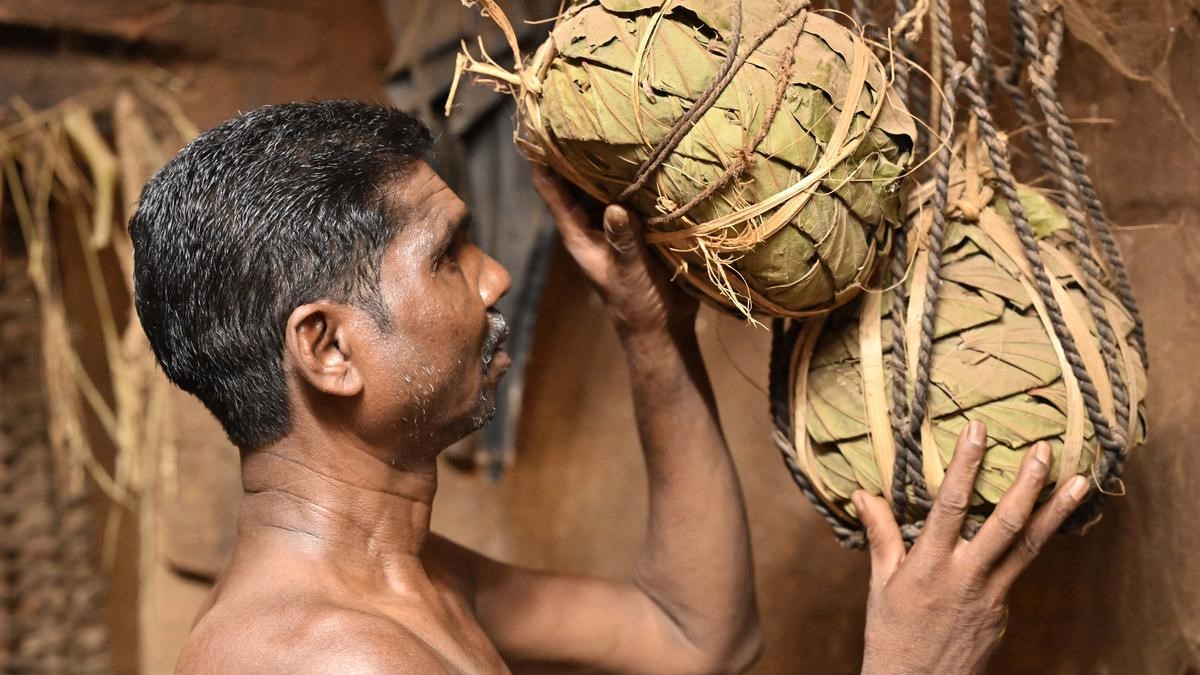Deda Method of Preserving Seeds

- 17 May 2024
Why is it in the News?
In his 50s, Madakam Unga, a Muria tribal farmer who migrated from Chhattisgarh and settled in the dense forests of the Godavari Valley, is still practising ‘deda’, a traditional method of preserving seeds that his ancestors handed over to his family.
What is the Deda Method?
- The Deda Method is an ancestral seed preservation technique passed down through generations.
- This unique method involves the use of natural materials to create a protective, airtight environment for the seeds, ensuring their viability for future planting.
Preservation Process:
- Seeds are packed tightly and wrapped in leaves to form a sturdy bundle resembling a boulder.
- The seed-filled leaf packages are then woven together with Siali leaves (Bauhinia vahlii), locally known as 'addakulu,' forming the distinctive deda structure.
- A deda consists of three layers:
- The innermost layer contains wood ash spread over Siali leaves.
- The ash is then covered with lemon leaves, creating a protective casing.
- Lastly, seeds are preserved within this casing and sealed, with each deda supporting up to 5kg of seeds.
Advantages:
- The Deda Method effectively protects seeds from pests and worms, ensuring their quality and viability.
- Seeds preserved using this technique can be used for cultivation for up to five years.
- This method is particularly useful for preserving the seeds of various pulses, such as green gram, red gram, black gram, and beans.
- By utilizing the Deda Method, farmers can maintain a reliable, diverse collection of seeds, contributing to sustainable agricultural practices and supporting long-term food security.
Facts About Muria Tribe:
- Location: The Muria tribe is found in the states of Telangana, Andhra Pradesh, Chhattisgarh, and Odisha.
- Language: They speak Koya, a Dravidian language.
- Population and Status: In Andhra Pradesh, the Muria, also known as 'Gutti Koyas' by native tribes, are internally displaced people (IDPs) with a population of around 6,600.
- Cultural Practices: The Muria have a progressive outlook on marriage and life.
- A notable example is the Ghotul, a communal dormitory that provides an environment for Muria youth to explore and understand their sexuality.
Recognition: While most Gutti Koya belong to the Gond or Muria communities, which are recognized as Scheduled Tribes in Chhattisgarh, they lack such recognition in Telangana.
